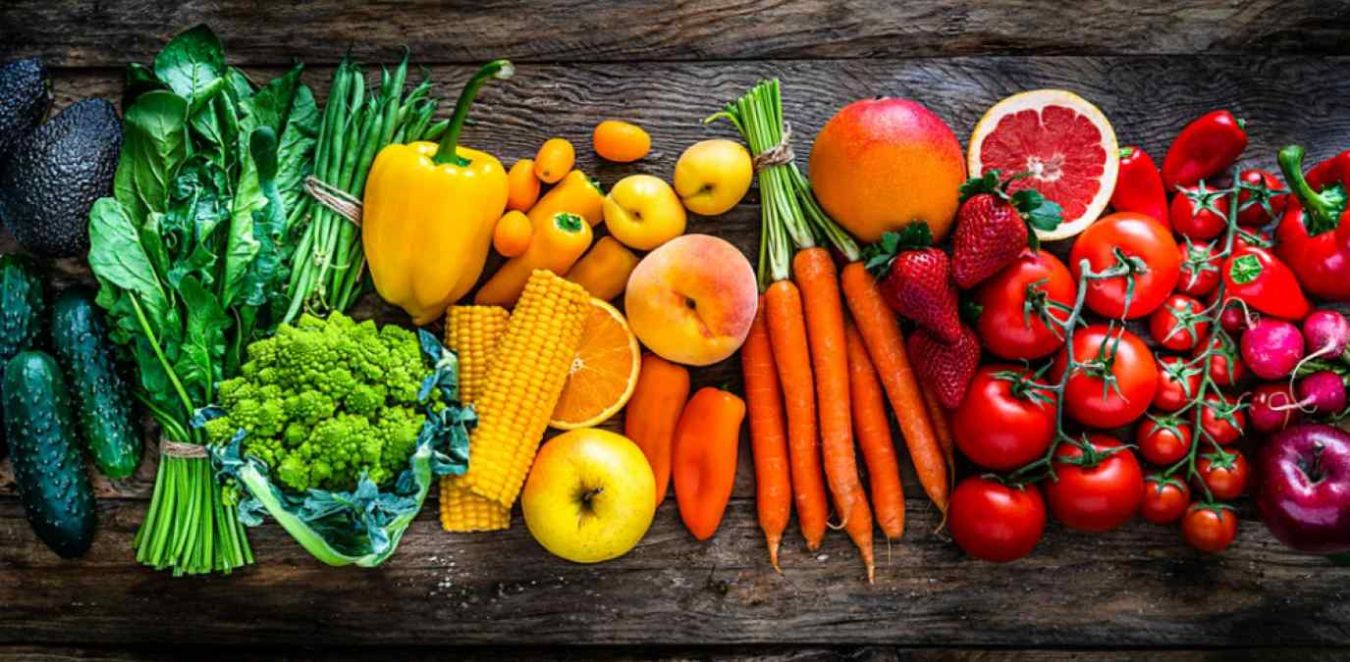Buying Fresh : How to Steer Clear From Food Poisoning
In this Blog of Tips for Buying Fresh, we will help you navigate your way to purchasing fresh fruits and vegetables. Eating fresh is very essential to ensure good health.
However, making sure that you are buying fresh produce can be a task. Everyone wishes that there was a machine that helped them figure it out but sadly that is not the case.
But why worry? Humans have long discovered the art of identifying fresh fruits and vegetables simply by smell and feel.
We are here just to freeze that information and make sure it is available for as long as we have not invented a purchasable product to detect the freshness of fruits and vegetables.
So, let’s dive right in.
The difference between Organic and Non-Organic products Near You

Image Source: Pinterest
The terms “organic” and “non-organic” refer to the way agricultural products are grown and processed.
Organic foods are grown without the use of synthetic pesticides and fertilizers, while non-organic foods may be grown with these chemicals.
The debate over which type of food is better for you – organic or non-organic – has been going on for years.
Some people believe that organic foods are more nutritious, while others argue that there is no difference between the two. So, what’s the truth?
Are organic foods really better for you? The answer is not clear-cut. While some studies have shown that organic foods are more nutritious than non-organic foods.
We believe both organic and non-organic can have their own benefits to provide and you have to juggle between the two to remain fit and lead a stress free lifestyle. In this blog however, we will focus more on how to purchase fresh organic food items.
| Organic | Non-Organic |
|---|---|
| Organic Food Is not only good for health but also the planet as an overall |
Organic food is more expensive than non-organic food |
| Farms producing organic food, most of the time produce less wastage |
Science has proved that the pesticides used in the production of non-organic food items have no effect on health |
| Low risks of being exposed to harmful synthetics |
Low risks of being exposed to mold toxins and bacteria |
Check the Temperature Near You To Ensure Buying Freshness
When you're at the grocery store, picking out the perfect watermelon can be tough. But there's an easy way to make sure you're getting a fresh one - just check the temperature!
The ideal temperature for a watermelon is between 60 and 72 degrees Fahrenheit. If it's any warmer than that, it's probably not going to be as fresh.
And if it's any cooler, it might not be ripe yet. So the next time you're picking out a watermelon, give it a little feel. If it's at the right temperature, you're good to go!
You might be wondering if we expect you to carry a thermometer, while going to shop for vegetables and fruits. Wrong, 25 degrees Celsius is considered to be room temperature and 60 degree Fahrenheit i around 15 degree Celsius, so you can easily make out the difference in temperature simply by touch
Beware of the Danger Zone Near Me
When it comes to buying fresh food, there are a few things you need to keep in mind. The first is the danger zone.
This is the temperature range between 40°F and 140°F, in which bacteria can grow rapidly. This is why it’s important to make sure your food is kept out of this range.
One way to do this is to buy fresh food that is still cold. This means it hasn’t been sitting out at room temperature for very long. Another way to avoid the danger zone is to buy food that is frozen.
Frozen food is safe because the bacteria cannot grow in cold temperatures. So, when you’re out shopping for fresh food, keep the danger zone fact in mind. Have a good look at where the vegetables have been lying and for how long.
Check for Expiration Dates To Ensure Buying Fresh
Check for Expiration Dates when buying fresh produce, it is important to check for expiration dates. This will ensure that you are getting the freshest possible product. Expiration dates are usually located on the side or bottom of the packaging.
Many people are often seen not believing in the concept of expiry dates even, but we strongly suggest against it.
Is It Still Good?
When it comes to fresh produce, there are a few key things to keep in mind in order to ensure that you're getting the best possible product.
- First and foremost, you want to make sure that the produce you're buying is actually fresh. There are a few ways to tell if produce is fresh or not, and one of the most important is to pay attention to the expiration date. If the expiration date is coming up soon, or has already passed, it's probably not going to be very fresh.
- Another thing to keep in mind is the appearance of the product. If it looks wilted or discolored, it's probably not going to be very fresh.
- And finally, you want to make sure that the product is not smelly, so overall it should look healthy, smell good and should not be too ripe.
Shop at the Right Time
Some fruits are seasonal in nature, they cannot be obtained all around the year. So, if you are seeing a watermelon in the winter season, there is a huge chance that it is either not fresh or not in its best form. So be careful while purchasing seasonal fruits and time
The best time to buy fresh produce is early in the morning, before the sun gets too hot. The produce will be at its peak of freshness and the prices will be lower than they will be later in the day.
When is the best time to ensure buying fresh Near You?
The best time to buy fresh produce is when it is in season. This is because produce is typically cheapest and freshest when it is in season. For example, strawberries are in season in the spring, so they will be cheapest and freshest then.
However, you can usually find strawberries year-round in the grocery store, just at a higher price. In this case you have to leave it up to, how the fruits looks, feels and smells.
How to pick out the most Fresh Buy Near You
When you're at the grocery store, it's important to pick out the freshest fruits and vegetables. Here are a few tips on how to do that:
- 1. Check the appearance. Fresh fruits and vegetables should be bright and vibrant in color. Avoid those that are dull or have brown spots.
- 2. Smell the produce. Fresh fruits and vegetables should have a pleasant smell. Avoid those that have an off-putting odor.
- 3. Feel the produce. Fresh fruits and vegetables should be firm to the touch. Avoid those that are mushy or have bruises.
- 4. Ask the store employees. The employees at the store are typically familiar with the produce and can tell you which items are more recently acquired
Conclusion
Food poisoning can be huge hindrance for day to day functioning. So, this blog is all about helping you steer clear from such hurdles.
We have enlisted a way of techniques that can prove very helpful in determining the freshness of your purchase. We hope you found this blog helpful and resourceful.







